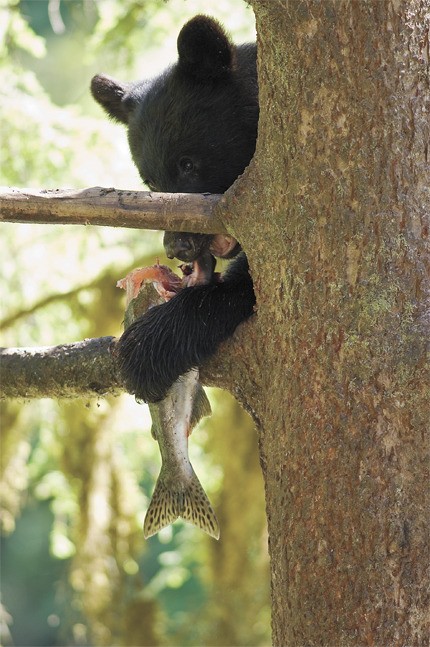Writer and photographer Amy Gulick has explored the wildest places in the Northwest, capturing images that show striking beauty as well as nature’s greater purpose.
Gulick, a North Bend resident, has just published her first book, “Salmon in the Trees,” a look at the salmon-based ecology of Alaska’s Tongass National Forest.
The Tongass is the nation’s largest national forest, covering most of southeast Alaska. It is home to a multitude of wildlife, but is increasingly under ecological threat. Gulick wrote her book to help protect it.
Sharing perils
Gulick is a former businesswoman who turned writer and photographer 17 years ago to serve her passion for wildlife.
Sharing her photos and stories, she realized that many people want to learn from others who have explored wild places. She began writing about the Arctic National Wildlife Refuge and the oil drilling debate there.
“The more I did stories on the outdoors and spent more time outdoors, the more I started seeing the beauty of it — and all the threats to it,” Gulick said.
Salmon in the trees
Telling others about the “salmon in the trees,” Gulick often gets a confused look from listeners who can’t fathom how the water-bound animal could live among land walkers like themselves.
She relates how Tongass trees that grow near salmon streams contain forms of marine nitrogen that come from fish.
“That just stuck with me. I couldn’t get it out of my head,” she said. “If there are salmon in the trees, and I can help people understand how they get there, then people will understand what this place is all about and will begin asking other questions.”
Salmon are born in fresh water streams and rivers, but go out to sea to mature as adults. When they come back to these streams, there are about 50 different species waiting to feed on them, bears in particular.
As the bears take their catch into the forest and eat the richest parts of the fish — skin, head, brain and eggs — they leave the rest throughout the forest.
“All that rich fish fertilizer decomposes in the soil and the trees absorb it in their roots,” Gulick said.
Healthy trees shade spawning streams, keep water temperature cool, prevent erosion and protect water quality. When they die, fallen trees create protective pools for spawning fish.
“The Tongass’ life cycle is still intact,” Gulick said. “All species that existed in the time of European settlement are still there, nothing is missing. In the 21st century, that’s astounding.”
Gulick launched a book tour a week ago to share the importance of the Tongass.
Protecting the forests helps both society and the ecology.
By doing so, “you can’t go wrong, especially now that we know these ecological connections,” she said.
For more information visit www.amygulick.com or e-mail to info@amygulick.com.



